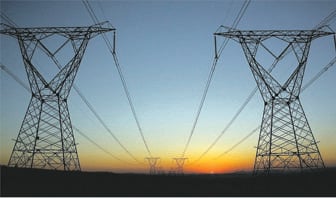
To save the power utility, it should be restructured into separate units, not broken up and privatised, says chief operating officer Jan Oberholzer
A new model for Eskom is urgently needed, says the parastatal’s chief operating officer Jan Oberholzer, but that does not mean it should be broken up and privatised.
Rather, the state-owned utility proposes restructuring into separate units of electricity generation, transmission and distribution, with each system ring-fencing its own business operations.
But it would still be Eskom, said Oberholzer, who was speaking at the IHS Energy South African Coal Exports Conference in Cape Town last week.
He said Eskom board chair Jabu Mabuza had “made it clear” that each system should be a functional business unit that could “look after itself”.
A relatively small head office would provide strategic focus and support.
This, said Oberholzer, would “put accountability back into focus” at Eskom as, “at the moment, it is as clear as mud”.
If it was decided that Eskom should be unbundled and its generation capacity eventually privatised, which is what economic analyst Grové Steyn – who is a member of the presidential task team compiling a report on a proposed future for Eskom – has previously suggested, Eskom may have to sign power purchase agreements (PPAs) with a central system operator in much the same way as independent power producers currently sign PPAs with Eskom, Oberholzer told City Press on the sidelines of the conference.
But whatever plan was decided, it would not happen immediately, he said.
Eskom first had to “fix its operations, get lean and mean, and make sufficient operating profit”, and it would need a further government bailout to do so.
How much it required would depend on what tariff increases the National Energy Regulator of SA (Nersa) allowed. Nersa is hosting public hearings on Eskom’s request for a 15% year-on-year tariff hike for the next three years.
But, certainly, the R100 billion relief that has been touted is “not enough”.
However, Oberholzer was quick to respond to fears that a further R100 billion loan from Treasury would lead to credit rating downgrades.
“It might not be from government,” he said, but “government might take over some of the debt to renegotiate better payback terms”.
A number of submissions to the Nersa hearings have criticised Eskom’s bloated staff complement, which costs the entity about R30 billion a year, as well as their lack of productivity, and suggested debt could be reduced by cutting excess staff.
The Electricity Intensive Users’ Group noted the growth in the number of Eskom employees from 32 000 in 2003 to 48 628 last year, and pointed to analysis by the World Bank, which showed that Eskom only required a workforce of 14 244 people.
Additionally, the group noted Nersa’s own 2017 study that measured against power output – Eskom produced 7.26 gigawatt hours of electricity per employee in 2007/08, but only 5.3GWh per employee in 2018/19.
But Oberholzer said there were no plans to lay off members of staff.
“We will focus on how we are going to increase productivity. Once you are there, you know what the requirements are.”
With about R420 billion debt to finance, Oberholzer said the interest charged on the debt was “incredible”, and the news from Eskom’s chief financial officer, Calib Cassim, was that Eskom needed R70 billion to continue operations for this year alone.
Almost half of this amount was owed to Eskom by residents of Soweto (in September, it was reportedly R15 billion) and municipalities, whose arrears had grown from R13.5 billion in April to R18.5 billion by December.
Oberholzer held out little hope of any spheres of government helping to recover this money as elections were looming and political parties would not want to risk being unpopular by putting pressure on consumers’ pockets.
Nor could Eskom disconnect defaulting municipalities as many residents paid their bills – it was the municipalities that were not passing on the payments.
“It’s a big problem. We’re not making headway. Maybe we need to go in [to municipalities] and take over revenue collection,” he said.
On the issue of Eskom’s coal supply woes, which led to the latest round of load shedding, Oberholzer said the board had confirmed that between R10 billion and R12 billion would be invested in cost-plus mines over the next five years.
The cost-plus model sees Eskom paying for capital expenditure at mines situated next to power stations where coal is transported directly via conveyer belt.
In return, supply is guaranteed at low cost, with the mine operator being paid a modest margin and making up for returns by exporting a percentage of its production.
Cost-plus agreements would also guarantee quality of coal, but Oberholzer also pleaded with producers to understand their responsibility to the country and adhere to the quality of coal agreed on and paid for.
With the draft integrated resource plan cutting coal-fired electricity generation by 30% by 2030, Eskom would begin retiring the ageing Hendrina and Komati power stations in Mpumalanga in September.
However, communities surrounded power stations such as Hendrina – businesses had been established to supply services to Eskom and there were schools, clinics and other infrastructure that would be affected if the plant was shut down.
Eskom was committed to a “just transition” and was looking at reskilling and retraining employees to work in other energy sectors.
Eskom could not afford the cost of demolishing retired power stations and would rather look into whether the facilities could be used for manufacturing.
“We have a social plan, we understand our responsibility.”
And, despite coal being cut back in the energy mix, there was still “a place for it”, and Eskom wanted to be involved in the growing renewable energy sector, although to what extent is still unknown.




 Publications
Publications
 Partners
Partners








